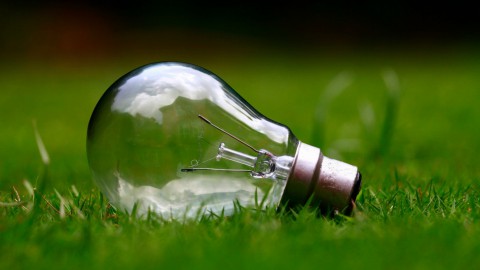The UAB to emit 13,000 tonnes less CO2 after buying 100% green energy

01/09/2019
The Universitat Autònoma de Barcelona - together with all other members of the Consortium for University Services of Catalonia (CSUC) - will for the first time use 100% renewable energy until January 2020 (high and low voltage electricity and gas) thanks to an acquisition made jointly with the CSUC.
The CSUC - made up of all Catalan universities, two universities in Madrid and research centres and science parks - has bought for the years 2018 and 2019 a volume of energy of 1,135.29 GWh, which will be made up of 100% green energy.
This means that the UAB's greenhouse gas emissions associated with its electricity consumption will be 0g CO2/kWh in 2018 and 2019 (while in 2017 the levels of CO2 emissions associated with the UAB's electricity consumption was 13,017 tonnes).
The awarding of the energy supply, both low and high voltage and gas, was conducted through an auction which consisted in two phases: first, a framework agreement was set (extendible to 4 years) to authorise eight companies which could offer at least 50% of the renewable energy; then, each of these eight companies offered a percentage of renewable energy and price, the combination of which, together with the score of the service and information obtained in the first phase, led to the final awarding of the contract, which went to Endesa Energia and Aura Energia.
Thus, the green energy the UAB will be consuming will come from renewable energies created by water, wind, sun and other similar sources. Until now, energy consumption came from fossil energies such as nuclear or carbon, both of which are far more contaminating.
By buying this energy, not only is 100% of the electricity supply made with renewable sources, the commercialisation applied by energy companies to the UAB has lowered from 1.019 Euros to 0.88 Euros/MWh. Therefore, there is a mitigation in the rise in prices suffered in recent years by energy buyers.
Energy consumption at the UAB
Although the UAB has seen a progressive and constant reduction in energy consumption, the weather conditions of this past year has caused it to rise again. In the past year 2017, the UAB's energy consumption rose 2.8% and CO2 emissions rose 20%. Electricity fell 0.8%, while gas increased 8.6%.
The energy supply to the UAB's buildings is distributed in the following manner: electricity makes up 59% of energy and natural gas, 41%. Consumption associated with climate control (heating and air conditioning) depends mainly on the weather conditions and internal temperatures. This means that a one degree rise in the temperature of a space implies approximately a 7% rise in consumption.
The UAB is considered to be leader in environmental issues, both in Spain and in Europe. It ranks 50 in the GreenMetric Ranking of World Universities on environmental criteria, conducted yearly by the University of Indonesia. This ranking analyses over 600 universities worldwide on issues related to sustainability and environment-friendly management policies, and among other things it evaluates aspects such as facilities, the use of water and means of transport.